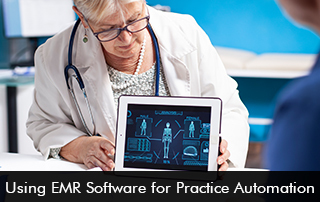Automating tedious daily tasks in healthcare is one of the major concerns of providers so that they can focus on patient care. Fortunately, Electronic Medical Records (EMR) Software tools have simplified tasks such as clinical documentation, medical billing, prescribing, and patient engagement. This saves time and money for healthcare practices, allowing them to invest in high-quality patient care delivery. Improving health outcomes is the ultimate goal of clinicians.
Documentation with EMR Software
To speed up and enhance documentation accuracy, EMR Software documentation tools come in handy. Speech-to-text technology, AI integration in documentation are great ways to empower providers to stress less about documentation. During a patient encounter, providers can give undivided attention to their patients. This in turn helps to improve patient satisfaction scores.
Billing Automation with Robust EHR Software Functionality
EHR Software is a game-changer for medical billing, making the whole process faster and less prone to mistakes. It’s like having a super-efficient assistant that connects patient records directly to the billing system. This means that when practices document a patient’s visit, the software automatically creates accurate bills based on the services provided.
It even handles the nitty-gritty details like assigning the right medical codes (ICD-10 and CPT) to diagnoses and procedures, checking if a patient’s insurance is valid right then and there, and catching any missing or wrong information before a claim is sent off. Plus, billing tools in EMR Systems can send out multiple claims at once, keep tabs on their status, and process payments electronically. This automation not only speeds up how quickly you get paid but also cuts down on claim rejections and makes the entire billing process way more efficient.
Patient Engagement Automation with EMR Software
Patient engagement solutions offered by electronic health records software make it easier for patients to be involved in their care by automatic appointment reminders, safe messaging, online forms, and tailored follow-up messages.
These tools ensure that patients stay informed, engaged, and connected with their healthcare journey, all without needing staff to manually reach out. Patients can use online portals and mobile apps to book appointments, see their test results, and talk to their healthcare providers, which makes things more convenient and increases their happiness. By automating these processes, patient engagement goes up, leading to better adherence to treatment plans and ultimately, healthier outcomes.
Practicing automation with powerful Electronic Medical Records Software has become a necessity for hospitals and practices to stay ahead of the competition. With automation, practices can benefit from financial gains and even satisfy patients by providing better patient care services.








